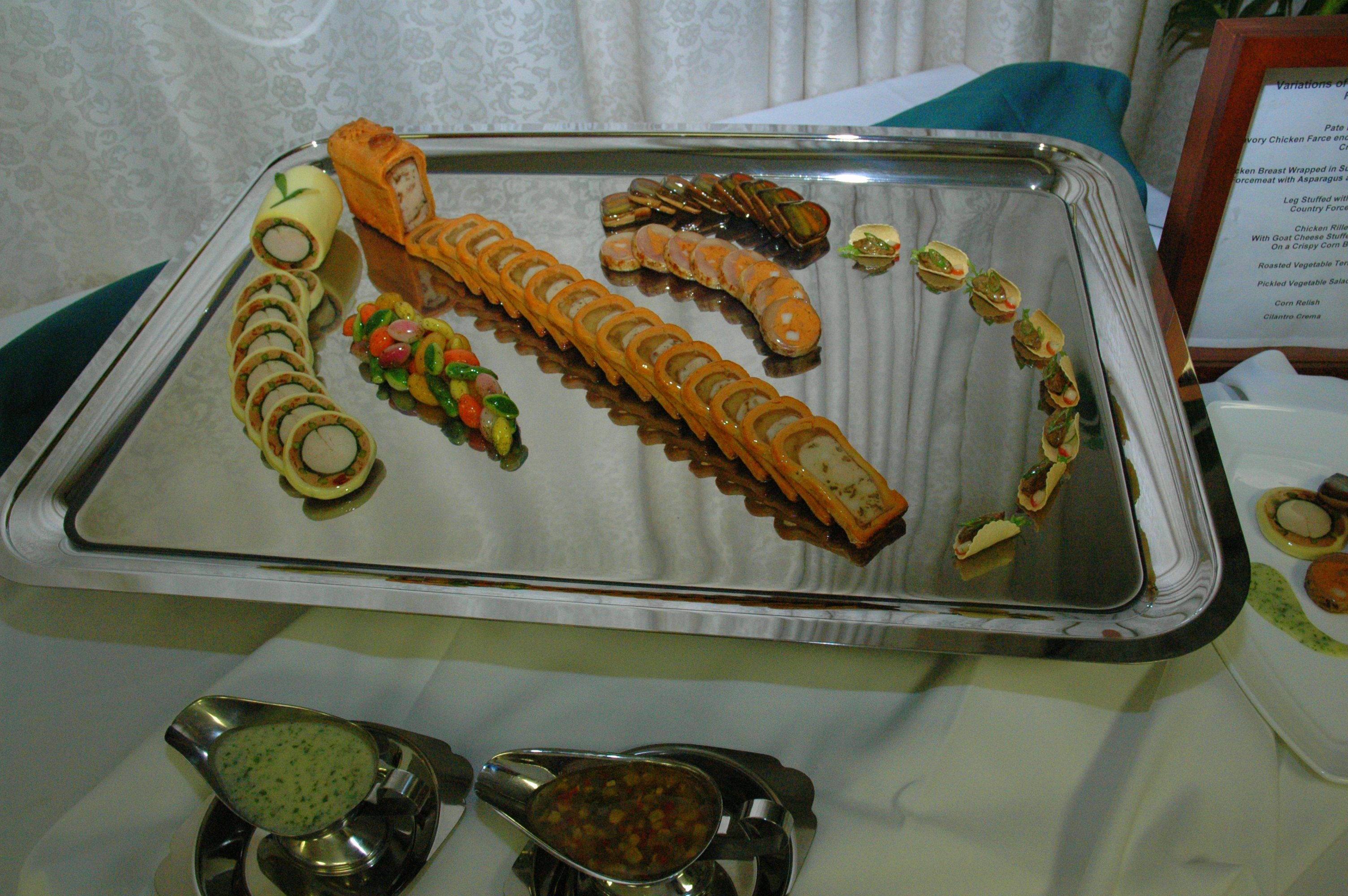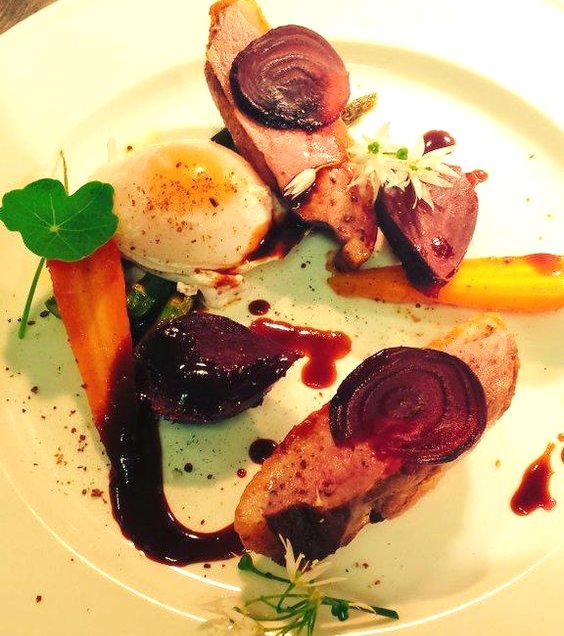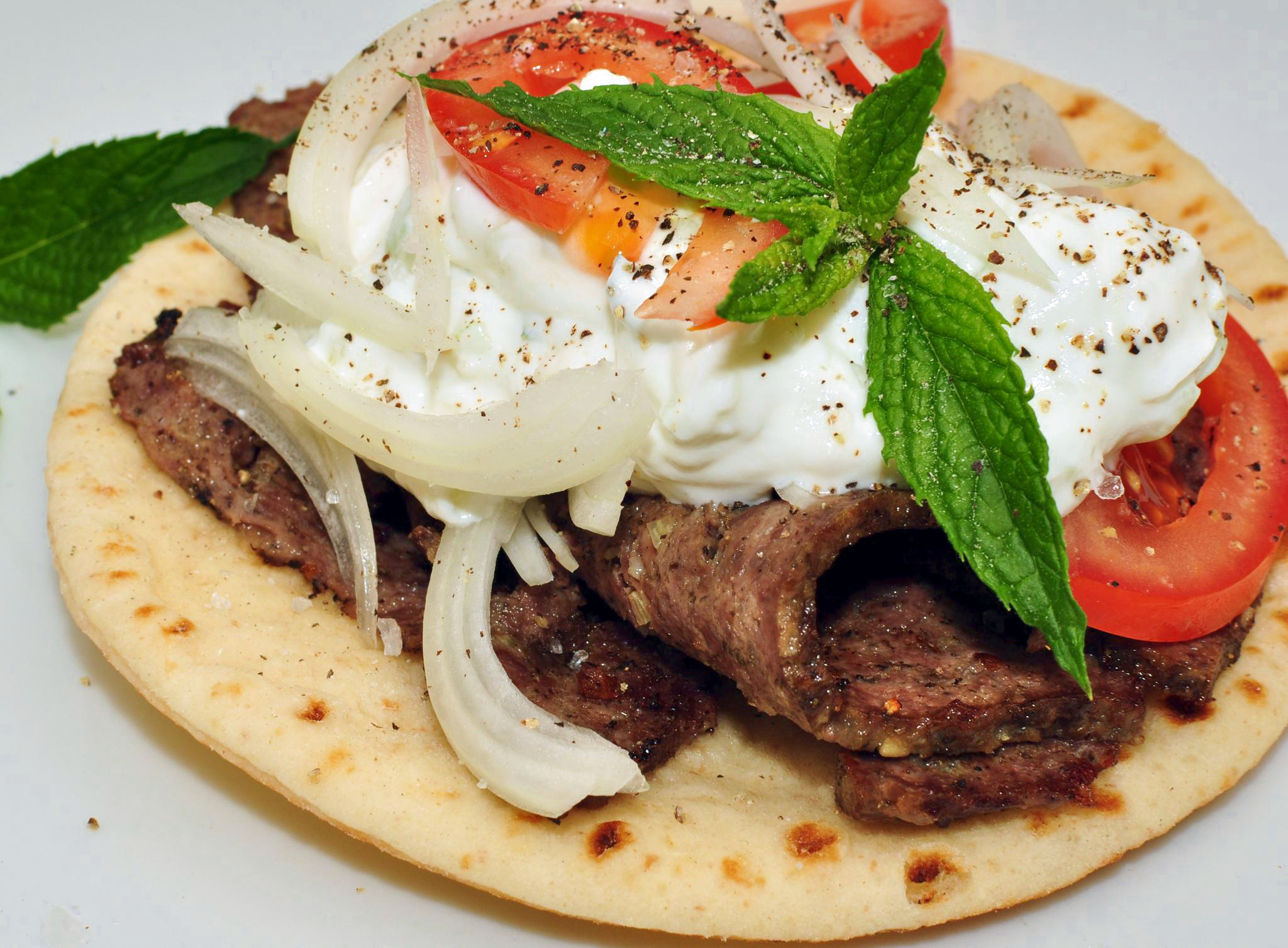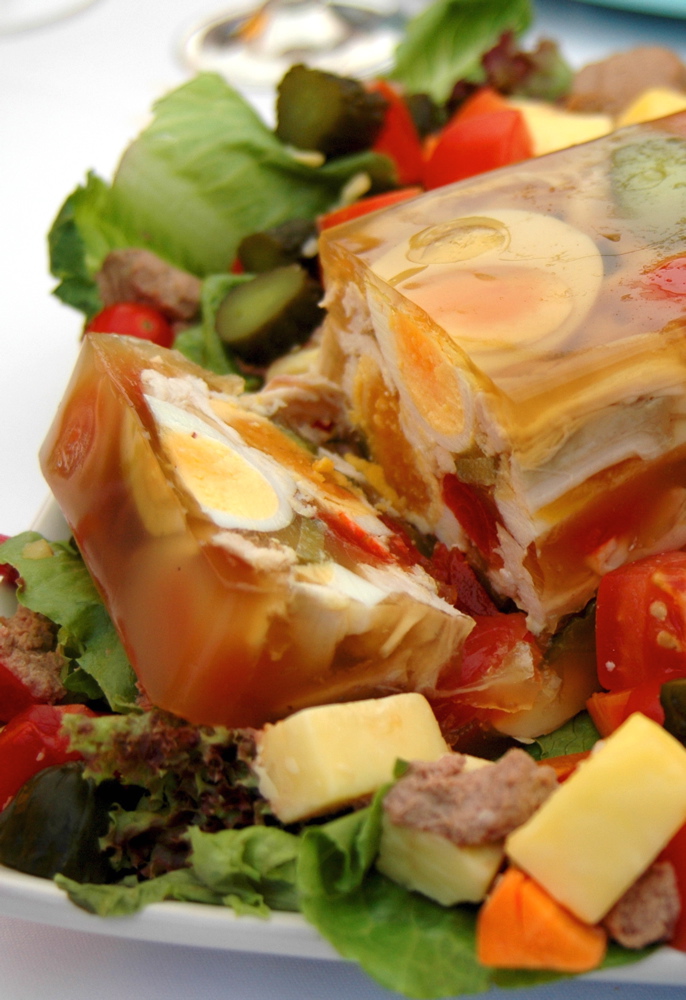|
Garde Manger
A (; French) is a cool, well-ventilated area where cold dishes (such as salads, , appetizers, canapés, pâtés, and terrines) are prepared and other foods are stored under refrigeration. The person in charge of this area is known as the "" or "pantry chef". Larger hotels and restaurants may have staff to perform additional duties, such as creating decorative elements of buffet presentation like ice carving and edible centerpieces. History The term originated in pre-Revolutionary France, where large, wealthy households designated a kitchen manager to supervise the use and storage of large amounts of foodstuffs. The term literally means 'keeping to eat'. The term is also related to the cold rooms inside castles and manor houses where the food was stored. These food storage areas were usually located in the lower levels, since the cool basement-like environment was ideal for storing food. These cold storage areas developed over time into the modern cold kitchen. Most me ... [...More Info...] [...Related Items...] OR: [Wikipedia] [Google] [Baidu] |
Modern Charcuterie Display
Modern may refer to: History * Modern history ** Early Modern period ** Late Modern period *** 18th century *** 19th century *** 20th century ** Contemporary history * Moderns, a faction of Freemasonry that existed in the 18th century Philosophy and sociology * Modernity, a loosely defined concept delineating a number of societal, economic and ideological features that contrast with "pre-modern" times or societies ** Late modernity Art * Modernism ** Modernist poetry * Modern art, a form of art * Modern dance, a dance form developed in the early 20th century * Modern architecture, a broad movement and period in architectural history * Modern music (other) Geography *Modra, a Slovak city, referred to in the German language as "Modern" Typography * Modern (typeface), a raster font packaged with Windows XP * Another name for the typeface classification known as Didone (typography) * Modern, a generic font family name for fixed-pitch serif and sans serif fonts ( ... [...More Info...] [...Related Items...] OR: [Wikipedia] [Google] [Baidu] |
Butcher
A butcher is a person who may slaughter animals, dress their flesh, sell their meat, or participate within any combination of these three tasks. They may prepare standard cuts of meat and poultry for sale in retail or wholesale food establishments. A butcher may be employed by supermarkets, grocery stores, butcher shops and fish markets, slaughter houses, or may be self-employed. Butchery is an ancient trade, whose duties may date back to the domestication of livestock; its practitioners formed guilds in England as far back as 1272. Since the 20th century, many countries and local jurisdictions offer trade certifications for butchers in order to ensure quality, safety, and health standards but not all butchers have formal certification or training. Trade qualification in English-speaking countries is often earned through an apprenticeship although some training organisations also certify their students. In Canada, once a butcher is trade qualified, they can learn to become ... [...More Info...] [...Related Items...] OR: [Wikipedia] [Google] [Baidu] |
Garde Manger
A (; French) is a cool, well-ventilated area where cold dishes (such as salads, , appetizers, canapés, pâtés, and terrines) are prepared and other foods are stored under refrigeration. The person in charge of this area is known as the "" or "pantry chef". Larger hotels and restaurants may have staff to perform additional duties, such as creating decorative elements of buffet presentation like ice carving and edible centerpieces. History The term originated in pre-Revolutionary France, where large, wealthy households designated a kitchen manager to supervise the use and storage of large amounts of foodstuffs. The term literally means 'keeping to eat'. The term is also related to the cold rooms inside castles and manor houses where the food was stored. These food storage areas were usually located in the lower levels, since the cool basement-like environment was ideal for storing food. These cold storage areas developed over time into the modern cold kitchen. Most me ... [...More Info...] [...Related Items...] OR: [Wikipedia] [Google] [Baidu] |
Garde-manger
A (; French) is a cool, well-ventilated area where cold dishes (such as salads, , appetizers, canapés, pâtés, and terrines) are prepared and other foods are stored under refrigeration. The person in charge of this area is known as the "" or "pantry chef". Larger hotels and restaurants may have staff to perform additional duties, such as creating decorative elements of buffet presentation like ice carving and edible centerpieces. History The term originated in pre-Revolutionary France, where large, wealthy households designated a kitchen manager to supervise the use and storage of large amounts of foodstuffs. The term literally means 'keeping to eat'. The term is also related to the cold rooms inside castles and manor houses where the food was stored. These food storage areas were usually located in the lower levels, since the cool basement-like environment was ideal for storing food. These cold storage areas developed over time into the modern cold kitchen. Most ... [...More Info...] [...Related Items...] OR: [Wikipedia] [Google] [Baidu] |
Culinary Institute Of America
Culinary arts are the cuisine arts of food preparation, cooking and presentation of food, usually in the form of meals. People working in this field – especially in establishments such as restaurants – are commonly called chefs or cooks, although, at its most general, the terms culinary artist and culinarian are also used. Table manners (the table arts) are sometimes referred to as a culinary art. Expert chefs are in charge of making meals that are both aesthetically beautiful and delicious, which requires understanding of food science, nutrition, and diet. Delicatessens and relatively large institutions like hotels and hospitals rank as their principal workplaces after restaurants. History The origins of culinary arts began with primitive humans roughly 2 million years ago. Various theories exist as to how early humans used fire to cook meat. According to anthropologist Richard Wrangham, author of ''Catching Fire: How Cooking Made Us Human'', primitive humans si ... [...More Info...] [...Related Items...] OR: [Wikipedia] [Google] [Baidu] |
Pantry
A pantry is a room or cupboard where beverages, food, and sometimes dishes, household cleaning products, linens or provisions are stored within a home or office. Food and beverage pantries serve in an ancillary capacity to the kitchen. Etymology The word "pantry" derives from the same source as the Old French term ; that is from , the French form of the Latin , "bread". History in Europe and United States Late Middle Ages In a late medieval hall, there were separate rooms for the various service functions and food storage. The pantry was where bread was kept and food preparation was done. The head of the office responsible for this room was referred to as a pantler. There were similar rooms for storage of bacon and other meats (larder), alcoholic beverages ( buttery, known for the "buts" of barrels stored there), and cooking (kitchen). Colonial era In the United States, pantries evolved from early Colonial American " butteries", built in a cold north corner of a Colonial ... [...More Info...] [...Related Items...] OR: [Wikipedia] [Google] [Baidu] |
List Of Restaurant Terminology
This is a list of restaurant terminology. A restaurant is a business that prepares and serves food and drink to customers in return for money, either paid before the meal, after the meal, or with a running tab. Meals are generally served and eaten on premises, but many restaurants also offer take-out and food delivery services. Restaurants vary greatly in appearance and offerings, including a wide variety of the main chef's cuisines and service models. Restaurant terminology * 86 – a term used when the restaurant has run out of, or is unable to prepare a particular menu item. Increasingly; when a bar patron is ejected from the premises and refused readmittance. Usually it is only for the rest of that night, though if the patron is especially violent, the ban may be for a longer term or even permanently. * À la carte * Bartender * Blue-plate special * Brigade de cuisine * BYOB – an initialism standing for "bring your own bottle", "bring your own beer", "bring your own b ... [...More Info...] [...Related Items...] OR: [Wikipedia] [Google] [Baidu] |
Food Presentation
Food presentation is the art of modifying, processing, arranging, or decorating food to enhance its aesthetic appeal. The visual presentation of foods is often considered by chefs at many different stages of food preparation, from the manner of tying or sewing meats, to the type of cut used in chopping and slicing meats or vegetables, to the style of mold used in a poured dish. The food itself may be decorated as in elaborately iced cakes, topped with ornamental sometimes sculptural consumables, drizzled with sauces, sprinkled with seeds, powders, or other toppings, or it may be accompanied by edible or inedible garnishes. Historically, the presentation of food has been used as a show of wealth and power. Such displays often emphasize the complexity of a dish's composition as opposed to its flavors. For instance, ancient sources recall the hosts of Roman banquets adding precious metals and minerals to food in order to enhance its aesthetic appeal. Additionally, medieval a ... [...More Info...] [...Related Items...] OR: [Wikipedia] [Google] [Baidu] |
Garnish (food)
A garnish is an item or substance used as a decoration or embellishment accompanying a prepared food dish or drink. In many cases, it may give added or contrasting flavor. Some garnishes are selected mainly to augment the visual impact of the plate, while others are selected specifically for the flavor they may impart. This is in contrast to a condiment, a prepared sauce added to another food item primarily for its flavor. A food item which is served with garnish may be described as being garni, the French term for "garnished." Many garnishes are not intended to be eaten, though for some it is fine to do so. Parsley is an example of a traditional garnish; this pungent green herb has small distinctly shaped leaves, firm stems, and is easy to trim into a garnish. Overview A garnish makes food or drink items more visually appealing. They may, for example, enhance their color, such as when paprika is sprinkled on a salmon salad. They may provide a color contrast, for example wh ... [...More Info...] [...Related Items...] OR: [Wikipedia] [Google] [Baidu] |
Brigade De Cuisine
(, "kitchen brigade") is a system of hierarchy found in restaurants and hotels employing extensive staff, commonly referred to as "kitchen staff" in English-speaking countries. The concept was developed by Georges Auguste Escoffier (1846–1935). This structured team system delegates responsibilities to different individuals who specialize in certain tasks in the kitchen or in the dining room. List of positions This is a comprehensive list of the members of a full kitchen brigade. Only the largest of establishments would have a staff of this size. As noted under some titles, certain positions are combined into other positions when such a large staff is unnecessary. Note: Despite the use of ' in English as the title for a cook, the word actually means "chief" or "head" in French. Similarly, ' means "kitchen", but also refers to food or cooking generally, or a type of food or cooking. ; (kitchen chef; "chief of the kitchen"): is responsible for overall management of kitchen; super ... [...More Info...] [...Related Items...] OR: [Wikipedia] [Google] [Baidu] |
Aspic
Aspic or meat jelly () is a savory gelatin made with a meat stock or broth, set in a mold to encase other ingredients. These often include pieces of meat, seafood, vegetable, or eggs. Aspic is also sometimes referred to as ''aspic gelée'' or ''aspic jelly''. In its simplest form, aspic is essentially a gelatinous version of conventional soup. History The 10th-century '' Kitab al-Tabikh'', the earliest known Arabic cookbook, contains a recipe for a fish aspic called . This dish was made by boiling several large fish heads with vinegar, parsley, cassia, whole onions, rue, black pepper, ginger, spikenard, galangal, clove, coriander seeds, and long pepper. The resulting dish was then colored with saffron to give it a "radiant red" color. The cooked fish heads and seasonings were then removed from the cooking liquid before the tongues and the lips were returned to steep until the liquid and everything in it had cooled and gelatinized. According to one poetic reference by Ibr ... [...More Info...] [...Related Items...] OR: [Wikipedia] [Google] [Baidu] |


.jpg)

.jpg)


